How many types of teeth whitening methods are there?
There are 5 different methods of teeth whitening treatment.
Which type of teeth whitening is right for me?
If the color of your teeth is close to white and we want to lighten them by a few shades, only laser or home whitening may be sufficient. However, if your teeth are very dark due to smoking, coffee or tea, the most effective and efficient teeth whitening method for you will be combined whitening. In order for us to decide on the appropriate teeth whitening method for you, you must be examined.

Contact
- Karanfil avenue . Alkaranfil street No: 4 Ofis No: 1 Beşiktaş / İstanbul
- +90 850 220 17 21
- info@checkupway.com
What is Zoom teeth whitening?
It is a teeth whitening system that is performed in a clinical setting and uses a special Blue Led developed by Philips.
How is Zoom teeth whitening applied?
Zoom teeth whitening is a "combined" teeth whitening system that starts in a clinical setting and continues at home.
The patient's teeth to be whitened are isolated with the apparatus included in the system. With Philips' blue LED system, zoom whitening treatment is provided in the clinical environment in three sets of 15 minutes each, totaling 45 minutes. Afterwards, whitening trays are prepared by taking mouth measurements, whitening gel and desensitizing gels in case of sensitivity are delivered to the patient for continuity of treatment at home.
How is home teeth whitening applied?
Personalized whitening trays are prepared by taking an intraoral impression. A certain amount of whitening gel (10-15% carbamide peroxide or hydrogen peroxide) is applied into this prepared tray.
How long does home teeth whitening last?
It is a treatment that lasts an average of 10-15 days, with the tray being used for at least 4-6 hours during the day, or 8-10 days by using it during night sleep.
How much gel should I put in the tray?
The point to be considered in home teeth whitening is not to apply the gel more than described. Otherwise, the gel overflowing through the plaque will irritate the gums. In such a case, the gums should be washed immediately and the dentist should be contacted by applying the cream containing vitamin E to the irritated surface.
What is in-office teeth whitening?
It is a teeth whitening method applied in a dental clinic. It is a suitable method for patients with time constraints. The application time is shorter than other methods. The whitening gel applied on the teeth by the dentist is activated with the help of UV light or laser and whitening takes an average of 1 hour. It is also known as "laser teeth whitening method".
What is combined whitening?
It is a teeth whitening method in which both office and home whitening are applied together. After being applied in the office or clinic, the procedure is supported with home whitening for 2-3 days.
It is applied to teeth that change color after root canal treatment. The filling in the tooth is removed, whitening gel is applied to the opened cavity and then the tooth is closed with a temporary filling. Sessions are repeated at 3-day intervals until the desired color is reached.
My teeth are sensitive, can I still have teeth whitening?
Biological teeth whitening can be applied to people with sensitive teeth. The substance that causes sensitivity in the whitening process is hydrogen peroxide. The rate of this substance in biological teeth whitening gel is very low and the gel contains enamel crystals and the treatment of sensitivity is also realized.
What should I pay attention to after my teeth are whitened?
As with other whitening methods, in biological whitening, it is necessary to avoid colored liquids such as tea, coffee, wine, acidic liquids such as cola and tobacco products, especially for the first two weeks after the procedure. Otherwise, the effect of whitening may decrease in the early period.
Does internal whitening harm the teeth?
If the root canal filling is very well isolated, there is usually no harm.
Is there any harm or side effects of teeth whitening?
Teeth whitening methods may cause some sensitivity in the teeth. This tooth sensitivity may be to air, very hot-cold foods and drinks. This is a normal and expected side effect. Tooth sensitivity is usually expected to disappear within 24-48 hours. In case of an unexpected situation, you should consult a physician.
What are the causes of tooth discoloration?
Lifelong physiological discoloration
Discoloration after amalgamation
Antibiotic use in infancy
Antibiotic use during pregnancy
Discoloration from inside the tooth due to root canal treatment
Discoloration of the tooth surface due to coffee, tea, tobacco, red wine and prolonged use of mouthwashes
Discoloration caused by bleeding inside the tooth due to the death of the living tissue inside the tooth as a result of trauma
How do teeth whiten?
Teeth whitening is the process of removing colored organic and inorganic substances formed in the porous enamel and dentin structure on the surface of the teeth with teeth whitening gels.
How long does it take for teeth to whiten?
Teeth whitening varies from person to person. The average whitening time is 2-3 weeks. Graying caused by antibiotic use is more difficult to whiten and may require a longer time to achieve the result.
Do I need to clean the whitening tray?
The bleaching tray is cleaned. After use, the trays are washed with cold water and liquid soap, rinsed thoroughly and stored in the tray box provided.
Is the effect of teeth whitening permanent?
After whitening, the color starts to fade over time. This period varies depending on the patient’s use of colored liquids (tea, coffee, wine, cola, etc.) and smoking, and takes between 6 months and 1 year. If supported with 1 or 2 sessions in 4-6 months, teeth whitening is made permanent.
What should I pay attention to when whitening my teeth?
During and for 2 days after whitening, colored liquids such as tea, coffee, wine, cola and tobacco products should be avoided. If they are used, the process reacts adversely and the teeth become discolored.
What is laser teeth whitening?
Laser teeth whitening method is used to ensure the activation of the whitening drug applied to the enamel surfaces and to shorten the duration.
*Page content is for informational purposes only. Please consult your doctor for diagnosis and treatment.
Aesthetic Smile Design

Aesthetic Smile Design
How many sessions does digital smile design take?
It takes an average of 2 sessions to make the design and show it to you in the mouth. In the first session, your records are taken, and in the second session, this design is shown to you in the mouth with the application we call “Mock Up”. Treatments are started according to the methods determined as a result of the design. Although the next sessions vary according to the condition of your teeth and the procedure to be performed, the result can usually be achieved in 3 sessions.
What will I encounter at the first appointment of digital smile design?
In the session applied for digital smile design, photos and videos are taken under studio equipment. In the same session, an impression is taken from your upper and lower jaw for designing.
How many days does it take to prepare a digital smile design?
The digital smile design is prepared in 3 to 5 days. In this process, the data recorded at the first appointment is digitally evaluated by the physician and the projected smile is designed. While designing the smile, parameters such as the individual’s facial features, eyes, ears, nose, chin tip, etc. are taken into consideration. While determining the tooth forms, it is essential to provide a dynamic harmony with the style of the person in accordance with the concept of visagism.
The digital design is converted into a model on the measurements taken and a second appointment is given to test the model and present it to the patient.
What kind of process is applied in the rehearsal session?
A silicone mold (mock up) obtained from the prepared digital design model is placed on your teeth. With the guidance of the physician, this design can be examined in front of a mirror or by taking a camera recording. The silicone mold (mock up) material is then removed from the mouth.
What are the situations where this rehearsal cannot be applied?
In cases where one or more of the teeth are too far forward/outward from the position they should be, it will not be healthy to make a rehearsal without changing the position of that tooth. Therefore, such teeth may prevent the ideal design from being rehearsed with 100% accuracy. However, this situation is taken into consideration by the physician and the patient at the decision stage and planning is made.
What happens when I accept a digital smile design?
The physician explains in detail what kind of procedures should be done to the existing teeth in order to achieve the ideal smile design with alternatives, if any. Digital smile design is usually achieved by applying Orthodontics, Dental Implants, Prosthesis and Gum applications alone or together.
According to the agreed treatment procedure, the physician gives the patient a new appointment and starts the treatment. All treatments and the current situation are recorded and everything is planned according to the digital design.
Can I make changes to the digital smile design?
The main purpose of the rehearsal session is for the person to approve and accept the smile design, to express the points that they do not approve of, and to correct these points by changing them as desired. While minor changes can be made in the same session (such as increasing/decreasing the length of a single tooth), for larger changes, the session may need to be repeated at a new appointment.
Will the smile shown in the digital smile design be the same when the treatment is finished?
The material used in the rehearsal session is not sufficient in terms of both durability and appearance and is produced and used for rehearsal purposes in a short time. However, the teeth to be prepared during the treatment process are produced in laboratory conditions with special methods using durable materials.
*Page content is for informational purposes only. Please consult your doctor for diagnosis and treatment.
Zirconia Tooth

What is Zirconia Tooth?
Zirconium element, a white colored hard metal, is used in dentistry in the form of “zirconia (zirconium dioxide)”. It is a biocompatible material with very high fracture resistance. It is also a suitable choice for patients who are allergic to metal elements such as nickel-titanium.
In Which Dental Treatments Is Zirconia Treatment Used?
Thanks to its light transmittance, engravable and polishable structure, it can be used in the construction of all front / back restorations. It is one of the preferred restoration materials in dentistry because it is tissue-friendly.
How are Zirconia Veneers Applied?
Abrasions are made from the teeth according to the type of restoration to be made and the amount of healthy teeth. Measurements of the teeth are taken from the patient with 3D digital scanners. A digital model of the tooth to be produced is created on the computer and veneers are produced in 3-axis zirconia engraving devices. According to the patient’s photographs, the final make-up is made and baked, and the process is completed with the final polish, providing a natural appearance.
How to Care for Zirconia Veneers?
Zirconia veneer care is no different from normal teeth. It should be brushed 2 times a day, and between each tooth should be cleaned regularly with dental floss. Like every patient, patients with zirconia veneers should not neglect routine dental checks every 6 months.
What are the Advantages of Zirconia Teeth in terms of Aesthetics?
In metal-supported porcelain, which is an older method than zirconium veneers, the inner surface of the veneers is covered with gray-colored metals. These coatings are obtained by stacking tooth-colored porcelains on the metals. However, due to the transparent structure of the porcelain, the silhouette of the gray metal underneath becomes visible over time and the veneers appear more dull than natural teeth. Zirconia teeth have a one-piece structure and are all the same color as the tooth. In addition, an aesthetic appearance suitable for the person’s own tooth structure is provided by giving a transparency effect to the ends as in natural teeth.
How many days does it take to make zirconium veneers?
Thanks to the advancing technology, the measurement of the teeth is taken digitally and instantly transmitted to the laboratory and the designs are made in a digital environment within minutes. In this way, time losses such as converting the impression into plaster and courier time are saved. These periods, which used to take 4-5 days in the past, are now shortened until the measurement taken in the morning is delivered in the evening.
Is There Pain During Zirconium Veneer Procedure?
All teeth to be restored are anesthetized with digital anesthesia before the procedure and temporary restorations are delivered to the patient before the feeling of numbness passes and the patient is ensured to maintain his/her standard of living with temporary veneers until the new teeth arrive.
What Should I Pay Attention to After Zirconia Veneers?
After the veneers, there is no need for any extra treatment or prevention after following the daily oral hygiene rules and going to the dentist control once every 6 months. Zirconia dental veneers are resistant to pressure like our own teeth and daily needs such as cutting / chewing etc. can be done.
Can Zirconia Veneer Dental Treatment be Applied to Those Allergic to Metal?
Allergy was a common condition in old type metal-supported dental crowns. Zirconium allergy, on the other hand, appears quite rare, although it varies from patient to patient compared to metal-supported veneers. Therefore, zirconia is a priority option for allergic individuals.
Does Zirconia Veneer Teeth Change Color in the Future?
The color of zirconia veneers does not cause discoloration over time. It remains in the mouth for extra long years after following the daily oral hygiene rules and going to regular dentist control every 6 months.
Is Fracture or Falling of the Veneer Common in Zirconia Teeth?
As a result of the designs made by correctly determining the patient’s chewing movements and the relationship of the two jaws relative to each other, a fracture is not expected in routine use. The fracture resistance of zirconia is higher than that of teeth, but a severe trauma, a strong impact as a result of an accident may cause the tooth to break.
The chemical properties of the adhesives we call “cement” used for bonding zirconia veneers have ideal properties for adhesion to both teeth and zirconia. During the abrasion of the teeth, principles to increase the adhesion are utilized and it is rare for the veneers to come off the teeth.
Can Zirconia Veneers Be Applied in People with Gum Disease?
It is not a correct procedure to make veneers when the gums are inflamed. In the presence of a possible gingivitis, it is aimed to give a healthy appearance by treating the gums first. Afterwards, a compatible zirconia coating that does not harm the gums should be planned and applied.
*Page content is for informational purposes only. Please consult your doctor for diagnosis and treatment.
Porcelain Lamina Tooth Veneer
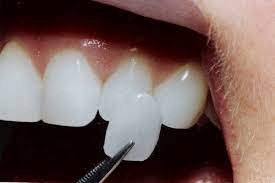
What is Porcelain Lamina Dental Veneers?
Porcelain dental veneer is a method in which only the front surfaces of the teeth are thinned by 0.3-0.7 mm without cutting all the surfaces of the teeth and the healthy tooth tissue is minimally lost. It is the process of bonding porcelain dental laminates to this thinned area.
In which cases are porcelain dental laminates applied?
In severely discolored teeth that cannot be achieved with teeth whitening,
Teeth with poor structural form and shape,
To unite the separated teeth (diastema closure),
Restoration of broken or worn teeth,
Correction of old fillings that have discolored and structurally impaired,
It can be a cosmetic alternative for the correction of crowded and crooked teeth (as an alternative to orthodontic treatment).
Who can receive porcelain lamina dental veneers?
Porcelain lamina dental treatment can be applied to almost everyone.
What are the advantages of porcelain lamina teeth?
- The desired appearance is achieved with a minimal abrasion of 0.3-0.7 mm. The process takes 7-10 days on average.
- They are made of robust, colorfast and durable materials.
- Having the aesthetic features (color, shape, etc.) you want without disturbing the natural structure of your teeth can be done with porcelain lamina. Either no change is made on the tooth or a minimal correction is applied. The amount removed from the tooth is limited to 0.3-0.7 mm.
- A copy of your teeth that you are not satisfied with the appearance of your teeth is obtained and a design is made on it. In other words, before intervening in the teeth, the change to be created in the teeth can be shown as a demo at the beginning of the treatment. This demo is called a mock-up.
- Porcelain surfaces are smooth, thus minimizing stains caused by smoking and similar reasons.
- It does not change color with external factors such as coffee, tea and cigarettes.
- High resistance against abrasion.
Are there any cases where porcelain dental laminate treatment is not applicable?
Porcelain laminate treatment is not applicable in the following cases.
Jaw disorders
Bad habits such as nail biting and pencil biting
Porcelain lamina treatment is not applied in cases where severe gum recession is present.
How many sessions does porcelain lamina veneer take?
If your gums do not require any treatment or intervention in terms of dental aesthetics, the treatment is expected to be completed in 2-3 sessions within 1 week.
What are the treatment stages of porcelain lamina veneer application?
In the first session, your teeth are measured without abrasion and a work is done on the model. Then the teeth are abraded and the impression is repeated with a sensitive impression material. At your next appointment, laminates are applied to your teeth.
Do porcelain lamina teeth fall off?
The adhesion values of today’s bonding technologies are very high. If the dentist acts in accordance with the technical precision in the application, you can use your laminates as if they were your own teeth.
How long does porcelain laminate teeth last?
Laminates can be used for years without any problems with good and proper oral care. This is because they are made of porcelain, which has superior properties than other bonding systems. They are resistant to staining and abrasion. It is necessary to pay attention to oral care to extend their life.
*Page content is for informational purposes only. Please consult your doctor for diagnosis and treatment.
Inley and onley
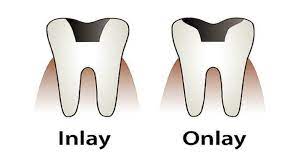
What are inlays and onlays?
Inlays and onlays are a solution between filling and crown. It is an aesthetic treatment method applied to teeth that do not have enough tooth tissue to be filled or are not damaged enough to be crowned.
What is the difference between inlays and onlays?
The difference between them is related to the area they cover. Inlays are more similar to fillings, but they are located between the mounds (tubercles) on the chewing surface of the teeth. Onlays, on the other hand, are made to cover one or more cusps.
What is the content?
Inlays and onlays are made of ceramic or fiber-reinforced composite.
Why are they preferred?
Generally, in root canal treated or severely decayed teeth, there is insufficient intact tooth tissue left after the decay is removed. Since inlays and onlays are prepared on the model, the desired anatomical form and contact can be easily achieved. It is also more resistant to abrasion and chewing pressures than conventional filling material.
What is the lifespan of inlay and onlay filling?
The lifespan of an inlay or onlay filling depends on the condition of the tooth, chewing forces, the degree to which the patient pays attention to oral hygiene and regular dental check-ups. They usually remain healthy for decades.
How is the application done?
- At the first appointment, the decay is cleaned, the prepared tooth and surrounding teeth are measured, the tooth is covered with a temporary filling material and the impression is sent to the laboratory.
- At the second appointment, the temporary filling is removed and inlays or onlays are bonded to the tooth using a special adhesive.
What should be considered in daily life?
Regular oral care including tooth brushing, flossing and regular visits to the dentist is all that is required for the maintenance of inlays and onlays.
*Page content is for informational purposes only. Please consult your doctor for diagnosis and treatment.
Aesthetic filling
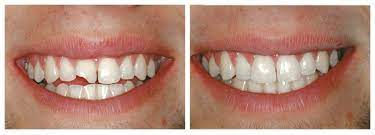
What is aesthetic filling?
Aesthetic filling is to obtain a more natural and aesthetic smile design by using composite material and filling material with the color of the person’s teeth. The composite filling is hardened with halogen light and chemically bonded to the tooth.
Why are aesthetic filling applications preferred?
The main goal is that the fillings are in the form of natural teeth in shape and color, the filling borders are not obvious, and the person cannot distinguish the filling from his/her own tooth.
Are aesthetic fillings durable?
Although it was believed that metal fillings were more durable and functional in previous years, with the developing technology, the material content has been strengthened and metal fillings have been replaced with a much longer lasting, aesthetic and healthy structure.
Do aesthetic fillings have a lifespan?
With routine oral care, aesthetic fillings do not deform, there is no spacing or leakage in the fillings. In your 6-month controls, your aesthetic fillings are maintained, their polishes are renewed and they last much longer. In short, the life of the filling is related to the oral care of the person.
Is it necessary to change aesthetic fillings over time?
No, as long as your teeth are routinely maintained, it is not necessary to change the aesthetic filling if there is no decay detected in the tooth.
What is the resistance of aesthetic fillings, do they protect the teeth?
Since it is closer to the hardness of our natural teeth and chemically bonded to the teeth, it is more protective against possible fractures in the teeth.
Can I replace my black (amalgam) fillings with aesthetic fillings?
You can have your amalgam fillings replaced with aesthetic fillings in a single session
Should I have an aesthetic filling or porcelain veneers?
We are in favor of preserving the natural structure of the tooth as much as possible. Teeth that have become unstable due to major decay or fractures are first evaluated to what extent they can be strengthened with aesthetic fillings. Thanks to advances in composite technology, most teeth that used to require porcelain veneers can now be maintained for many years with only fillings.
*Page content is for informational purposes only. Please consult your doctor for diagnosis and treatment.
Tooth tattoo
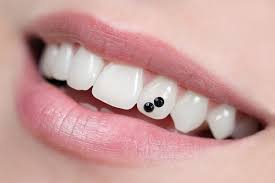
How is dental tattooing done?
Dental tattooing is done by engraving on your veneer or implant crown. First, a digital impression is taken from the patient, then the veneer is produced and the technician engraves the desired tattoo on the veneer.
What kind of paint is used for dental tattooing?
No paint is used in tooth tattooing. The material used is porcelain. Porcelain is liquid before it is baked. After the desired motif is engraved on the veneer with a brush, it is baked and polished. In this way, it is protected from the oral environment and becomes resistant to abrasion.
How long does it take to make a tooth tattoo?
It usually takes about 2-3 days. This time may vary depending on your veneer and the desired motif.
Can tooth tattooing be applied to every tooth? Is there an age limit?
Yes, it can be applied to every tooth, there is no age limit.
Can every pattern be applied to a tooth tattoo?
Every desired tooth can be applied.
Is there any pain when getting a tooth tattoo?
No, you will not feel any pain, because the tattoo is applied to the veneer tooth in a laboratory environment, no work is done in your mouth.
Can a tooth tattoo be removed at will? Is it durable?
It can be erased, and it is not as difficult as a body tattoo, it can be scraped and polished again in the mouth without removing your veneer to give a natural tooth appearance. The tooth tattoo does not come off because it is porcelain.
*Page content is for informational purposes only. Please consult your doctor for diagnosis and treatment.
Tooth crystal
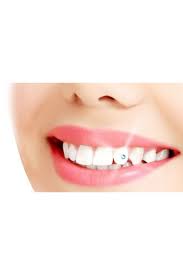
What is a tooth crystal?
A dental crystal is a crystal that is bonded to the tooth surface. If desired, a dental diamond can also be used. These are accessories worn on the teeth.
How is a tooth crystal attached?
It is glued to the visible surface of the tooth you want by your dentist with special adhesives without any abrasion on the tooth surface.
Will the tooth crystal fall off over time?
Since it is on the tooth surface, there is a risk of it falling off if it is overstrained by biting movements; however, it does not harm your tooth. In cases such as falling off, it can be glued again.
How to wear a dental diamond?
A dental diamond is a natural stone and its bonded surface is sharp. In order to adapt this sharp surface to the tooth, a small abrasion is made on the tooth surface in the diameter of the sharp part of the diamond. A special adhesive is applied between the tooth and the diamond.
Can I remove the tooth crystal or diamond if I get tired of it?
The tooth crystal can be removed at any time, and your tooth will regain its former appearance with the polish applied to the tooth surface.
Will the tooth crystal damage my tooth?
Since it is only bonded to the tooth surface, there is no harm to the tooth.
Can I glue the tooth crystal myself? Why should I go to the dentist?
There are tooth crystals on the market that you can glue yourself; however, the adhesive material is not the same as the one used by your dentist. In this case, it is possible for the stone to fall off, causing permanent discoloration and damage to your teeth. When you glue it yourself, the overflowing adhesives create an unpolished surface and facilitate plaque accumulation and cause discoloration. Therefore, have this procedure done by a dentist.
Does it bother my lip?
The surface is smooth and does not bother your lips.
Does the color change over time and do I need special care?
Apart from your daily oral care, no special care is required and the color does not change.
*Page content is for informational purposes only. Please consult your doctor for diagnosis and treatment.
Invisalign (Wireless Orthodontics)
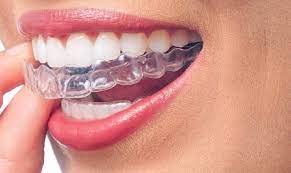
Invisalign (Wireless Orthodontics)
You can have your orthodontic treatment without braces. Invisalign treatment is done with a series of transparent dental molds (aligners) produced for you. These transparent molds are used to align your teeth and treat crowded teeth.
Porcelain Braces
It is a treatment that allows the correction of crooked teeth with the help of small, square, porcelain (transparent) retainers called brackets fixed to the front surfaces of the teeth and braces placed inside these brackets. Since porcelain brackets are white in color, they are less visible.
Metal Braces
It is a treatment that allows the correction of crowded teeth with the help of braces made of square, small, stainless steel brackets called brackets fixed to the front surfaces of the teeth and braces placed inside these brackets.
*Page content is for informational purposes only. Please consult your doctor for diagnosis and treatment.
Treatment of Crowded Teeth with Orthodontic Correction (Orthodontics) Treatment without Braces with Transparent Aligners
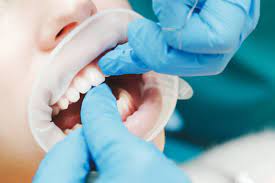
What is Invisalign treatment?
Invisalign treatment; It is a wire-free orthodontic treatment method applied to correct your teeth with transparent aligners made suitable for your teeth as digital orthodontic treatment technology. The reason why wire-free orthodontic treatment (invisalign) is preferred is that it is the application of crowded teeth treatment with transparent aligners without using braces.
What are the features of Invisalign treatment?
- It does not affect your daily life, it is the treatment of crowded teeth without the use of braces.
- Thanks to the use of transparent plaque, it is not visible in the mouth.
- Transparent plaques can be removed while eating or drinking.
- On special occasions (weddings, graduations, business meetings, etc.) you can remove your plaques and take a break from treatment for a few hours.
- Invisalign (clear aligner treatment) is applied to both teenagers and adults.
- No use of metal, brackets and wires.
- It gives preliminary information about the treatment outcome through intraoral scanners.
How do teeth move without braces?
- Invisalign aligners are produced in series according to the desired position of the teeth.
- Each plate creates 0.05 mm of movement.
- The aligners are worn for 15 days and then you move on to the next aligner.
How to produce transparent aligners according to tooth movement?
- Your orthodontist takes measurements inside the mouth.
- It is transferred to the computer environment with a 3D scanning method called CAD-CAM system.
- The teeth transferred to the virtual environment are moved by computer simulation.
- Transparent plaque is produced according to each 0.05 mm movement.
How long should transparent aligners be worn during the day?
- In Invisalign treatment, you need to wear the clear aligners for an average of 20-22 hours a day.
- It is recommended to remove it only when eating.
- For special occasions and invitations, it is recommended to take it out only during the event and not to repeat it frequently.
- You can drink normal temperature or cool drinks, but it is recommended to remove them when drinking hot drinks such as tea. Invisalign aligners are thermoplastic and can deform in the heat.
- Regular use of clear aligners in Invisalign treatment is an important factor for the treatment outcome.
Will I be able to see the end of treatment before my Invisalign treatment?
After your treatment plan is created in the virtual environment, you can see the end of the treatment in three dimensions. You can also observe the movement of your teeth throughout the treatment in a virtual environment.
Can everyone have orthodontic treatment without braces with invisalign?
It is an orthodontic treatment that can be applied to both adults and young people and children. However, it becomes clear whether you are suitable for Invisalign treatment only after your doctor’s examination. Moderate and mild tooth crowding and an orthodontic treatment that requires tooth extraction can also be treated with Invisalign. Only your doctor can determine whether Invisalign can be used with extraction.
Is invisalign treatment suitable for children?
Your child has lost all his/her baby teeth and has min. 2nd molars should have partially erupted. This corresponds to an average age of 12-14 years. For detailed information, you can review the invisalign first page.
How often are the controls in Invisalign treatment?
Your controls are planned to be once a month. The patient will receive 2 new clear aligners at each check-up. Transparent aligners are replaced every 15 days. For example; If 20 aligners are produced for your treatment, your treatment will correspond to a period of 10 months.
If transportation is provided for treatment from a different country or city, a separate planning can be provided between the patient and the doctor.
How to maintain Invisalign aligners?
You can clean your Invisalign aligners every morning and every evening with a toothbrush under warm water. You can also maintain your aligners with denture cleaning tablets.
Is the treatment shorter with normal braces or invisalign (clear aligners)?
The treatment time varies according to the case. Since computer technology is used in Invisalign treatment, no force is applied to the area where movement is not desired. Since it is used in mild and moderate crowding, the duration of invisalign treatment may be shorter than the duration of normal orthodontic treatment, although it varies from patient to patient.
Can I start my Invisalign treatment immediately?
It may take 1-1.5 months on average for your impressions to be sent abroad, your treatment plan to be created with the online system and invisalign aligners to be produced and delivered to the clinic. Although this time may seem like a disadvantage, the end of your treatment is clear at the beginning of the treatment.
Do I need any preparation before my Invisalign treatment?
Before starting crowded teeth treatment with Invisalign;
- Cleaning of caries in the mouth, if any
- Scaling is necessary.
Depending on the situation, your doctor may sometimes want to extract your wisdom teeth before invisalign treatment. No procedure is performed in the mouth after the impression is taken. Prosthetic procedures such as bridges and implants are performed after the invisalign treatment is finished.
Are any procedures performed after the Invisalign treatment is over?
After your Invisalign treatment is finished (valid for all orthodontic treatments), invisible fixing wires called “retainers” are attached to the inner side of your teeth to prevent any movement or reversal. The orthodontist determines the duration according to the treatment plan.
*Page content is for informational purposes only. Please consult your doctor for diagnosis and treatment.
Incognito braces treatment
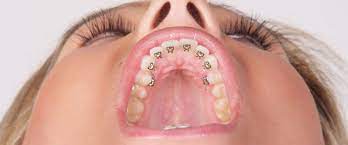
What is Incognito braces treatment?
Incognito, a lingual orthodontic treatment designed for the individual, is a braces treatment that is placed on the inside of the teeth.
What is Incognito?
Incognito is a custom-made braces system produced by 3M company that is attached to the inner side of the teeth (lingual). In other words, it is a lingual orthodontic system.
Can Incognito be applied to everyone?
Incognito (lingual orthodontics) is a treatment method that can be applied to everyone. It is preferably preferred by people who care about dental appearance. It can be applied to almost all cases. We recommend you to be examined by an orthodontic specialist for its suitability.
How is it produced individually?
The measurements taken by your doctor are scanned in 3D and transferred to the virtual environment. All lingual brackets are designed according to the form of your teeth. Since they are customized to the shape and form of each of your teeth, they take up minimum space on the tooth.
Your wires are bent beforehand with the computer system and sent to your doctor.
Is the incognito treatment time longer than normal braces?
The treatment time may be longer in lingual orthodontics compared to normal braces.
*Page content is for informational purposes only. Please consult your doctor for diagnosis and treatment.
Orthognathic surgery (jaw surgery)
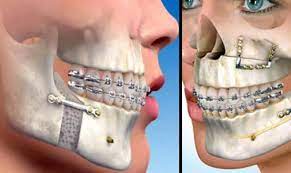
What is orthognathic surgery (jaw surgery)?
It is a surgical method that helps to correct the shape, structure and relationship disorders of the upper and lower jaw. It is also known as jaw surgery or jaw surgery.
Where does orthognathic surgery take place? Do you perform it?
Orthodontists and plastic surgeons work together in such cases. This type of jaw surgery is performed in a full-fledged hospital and under general anesthesia. The plastic surgeon is the one who performs the surgery.
Are orthodontics and orthognathic surgery separate procedures?
Orthognathic surgery is a procedure performed during orthodontic treatment. The two treatments are not done separately. For example, orthognathic surgery is performed when 2/3 of the orthodontic treatment process, which will take a total of 2 years, is completed. After the surgery is over, orthodontic treatment continues for an average of 4 months.
I want to be treated only with braces without jaw surgery?
For example, let’s say your lower jaw is too far forward. From the moment braces are placed, the teeth start to line up and it becomes more obvious that the lower jaw is too far forward. In addition, there is no proper bite. As a result, the existing image deteriorates even more.
If we only have tooth extraction, is there no need for jaw surgery?
In very rare cases, the tooth can be extracted without surgery. But the appearance of your face (since there is no bony change) does not improve. When you are examined, your doctor may still recommend jaw surgery.
Are such jaw operations performed frequently?
This type of jaw surgery has been performed in our country for a very long time. There are certain plastic surgeons that orthodontists work with. These surgeons perform these surgeries successfully quite often.
Can we do it with a plastic surgeon we know?
Such cases are a team work. The orthodontist should have experience with the surgeon. Some plastic surgeons focus only on surgeries such as nose and breast. Therefore, it should be researched very well. Your orthodontist will recommend you an experienced doctor. It will be healthier to decide together after the examination.
Are orthognathic surgery procedures risky?
Every surgery performed under general anesthesia has a risk. No doctor can say that any surgery is risk-free. It is risky to get on an airplane, but it is a vehicle we use frequently in our lives.
Does the surgery leave a scar?
The surgery is done through the mouth. There is absolutely no intervention on your face. Therefore, there will be no surgical scar. There is only swelling on the face due to edema. But this swelling resolves quickly.
Will I have pain after jaw surgery?
You will be given painkillers after the surgery. It is normal to have a gradually decreasing pain for 1-3 days.
When will I be discharged from the hospital?
Under normal circumstances, you will be discharged the next day. Your doctor will check you in the morning after orthognathic surgery. As a result of this check, you will be discharged.
What awaits me after jaw surgery?
The jaws will remain connected with tires for 1 week for the bones to fuse. You can change these tires yourself. Liquid nutrition is given during this time. You will be able to walk at home 2 days after the operation. You will go to your doctor for a follow-up 1 week after the chin operation.
At this check-up, your mouth will be opened and you will be taught opening and closing exercises. After this stage, the wearing of the tire continues gradually less and less.
Orthodontic treatment continues for another 4 months (on average) and then your braces are removed.
*Page content is for informational purposes only. Please consult your doctor for diagnosis and treatment.
Implant
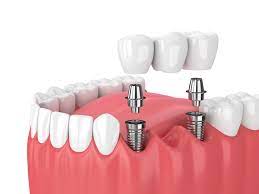
What is an implant?
Dental implants are titanium screws placed into the jawbone to replace missing teeth in the mouth. The missing teeth are replaced with dental prostheses such as crowns and bridges placed on these screws.
How is a dental implant applied?
The general health status of the patient to be implanted is first evaluated and an intraoral examination is performed. With 3D radiographic images, the suitability of the existing bone for the implant is evaluated. Millimetric measurements are made on this radiography and the length and diameter of the implant are decided. After the pre-planning is completed, the procedure is started under local anesthesia. Slots are opened in the jawbone for the implants and after the implants are placed in these slots, the procedure is finalized by suturing. On average 1 week after the operation, the stitches are removed and a control examination is performed.
What is done in the first examination in implant treatment?
In the first examination, the necessary clinical and radiographic examinations are performed by oral and maxillofacial surgeons, the general health status of the patient is evaluated and an intraoral examination is performed. The patient’s expectations from the treatment and the suitability of the existing bone for the implant are evaluated with 3D radiographic images. Millimetric measurements are made on this radiography and the length and diameter of the implant are decided. Aesthetic evaluations are made and the most suitable superstructure is selected for the patient.
What Should Be Considered Before Getting a Dental Implant?
Dental implant application is a surgical procedure. It should be performed by maxillofacial surgeons who are experts in their field and have sufficient equipment in order not to cause irreversible problems after treatment.
What are the Benefits of Implant Application?
With implant dental treatment, fixed prostheses are applied to patients who have to use removable prostheses because they do not have enough support teeth. Compared to bridge application by cutting neighboring teeth; With implant treatment, the missing tooth in the mouth can be completed without the need to cut neighboring teeth. In patients who use removable prosthesis but cannot hold the prosthesis due to bone insufficiency, implant retention can be increased by placing an implant and connecting it to the prosthesis. Dental implant; It is the treatment method used in tooth deficiencies today.
How Long Does Implant Application Take?
The procedure time may vary depending on the number of implants to be applied. The average implant head is placed by surgeons in about 10 minutes.
What is the dental implant adaptation process? How long does it take to complete the teeth?
Implant treatment time may vary from patient to patient. In some cases, the prosthesis stage can be started on the same day with all on four implant application, while in some patients, the adaptation process may be experienced due to additional surgical procedures. The implants are expected to merge with the bone in an average of 3 months in the upper jaw and 2 months in the lower jaw, and porcelain coatings are applied on them. If additional procedures are applied in the presence of thin or insufficiently high bone, the waiting period may extend up to 6 months.
Can Implant Treatment be Applied to Every Patient?
It is inconvenient for individuals with an uncontrolled major systemic disease or those who have recently received radiotherapy or chemotherapy. For this reason, it is important for the surgeon to know the health history of each patient for whom an implant is recommended.
What is the Best Age for Implant Treatment?
Implant treatment can be performed for every patient whose growth development is complete and whose health status is favorable. The average age at which bone development is completed is 15-16 years for women and 17-18 years for men. After these ages, implant treatment can be performed at any age. According to studies and researches, old age does not pose a risk in implant treatment. Therefore, there is no upper age limit for implant application.
In Which Cases Cannot Implant?
Some systemic disorders may prevent dental implant applications. Detailed information about your health condition should be given to the physician applied for treatment.
Can Smokers Have Dental Implants?
In many studies, it has been proven that smoking prevents bone integration with the implant. In smokers, the probability of the implant falling out is 2-3 times higher than normal.
How Much Pain Is Experienced During Implant Placement?
Before the implant operation, which is a surgical procedure, only the area to be treated is numbed with local anesthesia. It is necessary to take prescribed medications before the operation, use antiseptic mouthwashes after the procedure and good personal oral care.
Are dental implants likely to harm the human body?
Dental implants are made of titanium. Titanium, which is compatible with the human body, is a metal that does not contain any allergy risk and toxicity.
Are Dental Implants Long Lasting?
The life of a dental implant is like natural teeth. As long as standard oral and dental care is done well, it can be used for many years.
*Page content is for informational purposes only. Please consult your doctor for diagnosis and treatment.
All On Four Implant
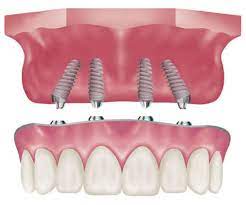
What is All On Four Implant?
The All On Four implant technique is a procedure that allows same-day denture fixation on four dental implants placed at specific angles in patients with complete edentulousness.
What are the features of implant treatment?
All On Four treatment
It is a technique to make a fixed tooth prosthesis with a single surgical procedure on the same day for completely edentulous patients.
It does not involve any advanced surgical procedures such as sinus elevation surgery, bone addition.
It is planned according to the person,
It is easier to clean and maintain than conventional dental implant fixed dentures.
It is suitable for patients with nausea reflex who cannot use removable dentures.
The design is different compared to complete dentures (palates).
The number of sessions required is low. It is also preferred by patients residing outside the martyrdom or abroad.
To whom can the All On Four implant technique be applied?
All On Four treatment can be applied to all completely edentulous (no teeth) patients who do not have any disease that would prevent dental implant surgery and have sufficient bone volume.
What are the stages of the treatment?
Patients scheduled for All On Four treatment must first undergo a detailed clinical and radiological examination. Measurements are made on computed tomography (CT) and a suitable planning is made for the patient.
The All On Four procedure consists of two stages: surgical and prosthetic procedures. On the day of treatment, 4 dental implants are placed in the patient in accordance with the planning, and on the same day, the temporary dental prosthesis is fixed on the dental implants. After 3 months, the patient receives permanent dentures.
Will I have pain after the treatment?
As with any dental implant operation, some pain and swelling may occur after the procedure. However, these complaints can be easily controlled with the medications you will use in accordance with your doctor’s advice.
Treatment Process
All On Four is a procedure that can be easily performed under local anesthesia. However, it can also be performed under sedation or general anesthesia in patients with high levels of anxiety and fear.
How will my nutrition be after the All On Four procedure?
After the procedure, you can use your temporary denture fixed on the dental implants immediately. However, during the 3-month period, which is the process of fusion of dental implants and bone, you need to eat a diet that your doctor will recommend to you. After the 3-month period is completed, you will be able to eat as you wish with your permanent prosthesis.
Is the All On Four procedure a successful procedure?
Studies show that the All On Four procedure is a treatment method with a high success rate in long-term follow-up.
*Page content is for informational purposes only. Please consult your doctor for diagnosis and treatment.
Mini dental implant
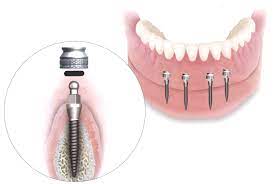
What is a mini dental implant?
Mini dental implants are smaller than standard dental implants. Mini dental implants have an average diameter of 2 – 2.8 mm.
When are mini dental implants used?
Mini dental implants are used to increase the retention of dentures.
Can everyone get a mini dental implant?
It can be done. It is more common to use mini dental implants especially in elderly patients or in patients with heart disease, diabetes and hypertension.
What are the features of a mini dental implant?
It is suitable for the budget.
It is applied without incision in the gum.
The patient’s prostheses are placed on the implants in the same session.
It can be applied in patients with systemic diseases and the elderly.
*Page content is for informational purposes only. Please consult your doctor for diagnosis and treatment
.
Jaw joint disorder
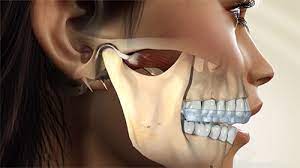
What is a jaw joint disorder?
Jaw joint disorders are disorders of the bony and soft tissues in the jaw joint that connects the lower jaw to the upper jaw. This can range from simple symptoms such as a clicking sound to serious symptoms such as locking of the jaw. It can occur for many reasons (accidents, incorrect treatment, stress, habits, etc.). Jaw joint discomfort continues to increase over time. Therefore, the earlier treatment is started, the more successful the treatment is.
What are the problems/diseases caused by jaw joint disorder?
Sound coming from the jaw while eating
Locking or sticking in the jaw
Pain
Restricted mouth opening
What are the causes of jaw joint disorders?
The causes can be divided into three main groups:
1) Depending on dental treatments:
20 years of age, such as extraction of the mouth remains open for a long time,
After orthodontic treatment,
Incorrectly applied coatings and fillings.
2) The person’s habits:
Lip eating,
Don’t lie on your stomach,
Putting your hand on your chin,
Chewing gum for a long time,
Prolonged exposure to wind, (especially for motorcyclists)
Do not slouch
3) The person is under stress:
It causes more jaw joint complaints than other factors. Since a person under intense stress is constantly contracting the facial muscles, the jaw joint is put under more strain than usual.
What is teeth grinding or clenching?
Teeth grinding is a disease that is observed during sleep at night and can cause serious disorders (gum recession, tooth fracture, joint complaints, etc.) in the future if no precautions are taken.
Teeth grinding occurs when the stress accumulated during the day is released during sleep at night and the teeth unconsciously slide over each other.
What are the problems caused by teeth grinding or clenching?
It causes problems such as wear and even fracture of the teeth, recession of the gums and the resulting cold-hot sensitivity, joint diseases due to excessive load on the jaw joint, and disturbance of the surrounding sounds.
What is teeth grinding or teeth clenching treatment?
Soft or hard night trays are recommended, which are prepared according to the size of your teeth. These aligners need to be renewed at regular intervals. However, it is important for the success of the treatment that the person reduces the stress in his/her daily life.
Do I clench my teeth only at night?
Contrary to popular belief, the habit of clenching teeth occurs not only at night but also during the day. The person can prevent this situation by creating awareness.
What are the symptoms of jaw joint disorders?
Jaw joint disorder does not occur overnight. It gradually gives symptoms over time and if the treatment is delayed, these symptoms can lead to more serious conditions over time. (Locking of the jaw, dislocation of the jaw, inability to open the mouth … etc.)
Click when opening the jaw
Sticking of the jaw when yawning
Difficult opening of the jaw in the morning
Pain in the ear area while eating
Common symptoms include neck and back pain (especially in women).
Will my jaw dislocate if I don’t get my jaw joint condition treated?
In the advanced stages of jaw joint disease, permanent deformations occur in the tissues and structures in the joint area and the jaw may be dislocated by the joint head coming forward more than where it should be in the opening and closing movement of the jaw. The main problem here is not the dislocation of the jaw. Because by making simple movements to the joint, the jaw will fall into place spontaneously, but the main problem is that this situation occurs frequently over time and severe pain occurs.
I have a jaw joint complaint, what should I pay attention to?
Eating soft foods, especially for three weeks
Avoiding excessive stretching
Not lying face down
Giving up habits such as lip-eating
Compressing the joint area with a hot towel in the morning
Avoid stress as much as possible
What is the effect of stress on jaw joint disease?
Muscles in the facial area have the ability to contract in the smallest reaction. One of the effects of stress on humans is muscle contractions without long-term relaxation. Therefore, in stressful situations, the muscles contract, the teeth come into contact with each other by applying intense force on each other and therefore the joint is also loaded.
What should I pay attention to when treating the jaw joint?
You should use the joint splint regularly as prescribed by your doctor and follow the recommendations.
How long will I use the joint splint?
Jaw joint treatment lasts an average of 3 months. However, this period may increase depending on the severity of the disease.
How should I store the joint splint?
The joint splint is stored in the prosthesis box with a moistened clean cloth.
How to clean the joint splint?
After removing the splint in the morning, it is brushed under running cold water using an old toothbrush with liquid soap that we wash our hands with.
At what intervals should I come for a check-up in jaw joint treatment?
After the splint is applied, you should come to the controls in the first week, third week and third month.
How do I know if I am cured in jaw joint treatment?
In jaw joint treatment, there is not always a complete recovery depending on the severity of the disease. The main healing criterion here is that the patient can perform daily jaw movements (eating, speaking, swallowing, etc.) without pain.
Are there any physical therapy exercises I should do in addition to joint splinting?
In some cases, your doctor will prescribe physiotherapy exercises to strengthen the muscles or open the jaw restriction.
How will I know if I have a jaw joint disorder?
Jaw joint disorder can have many symptoms. These can range from a clicking sound when opening and closing, to a locked or painful jaw. If you feel anything different about your jaw, contact your doctor. Because the stage of the disease is important for treatment.
What is the jaw joint and how does it work?
The jaw joint is the joint formed by the lower jawbone and the skull bone in the temporal region. It works together with our jaw muscles to enable chewing and speaking. There is a cartilaginous cushion (the jaw joint disk) that protects these two bones from friction and abrasion and facilitates jaw joint movements. The ligaments surrounding the joint also hold this system together. A normal person uses the joint 1500-2000 times a day.
What is jaw joint disease?
It is the disruption of the harmony between the jaw joint and the surrounding structures, either by a sudden impact or over time. Symptoms that start mildly over time can turn into more advanced problems such as severe jaw joint pain, head, neck, shoulder pain, noise coming from the joint, jaw dislocation, sliding opening or limited opening of the jaw. A dental examination, which helps to understand the causes of the discomfort, constitutes the first stage of treatment.
Who should I consult for jaw joint disorders?
Not knowing which specialist and where to apply for these diseases is a big problem for patients with jaw joint problems. However, the jaw joint problem is a branch of Maxillofacial Surgery Specialist dentists and after the correct diagnosis, the problem can be solved with various treatment methods. In some cases, support is also received from ear, nose and throat, psychiatry, neurology or physical therapy branches.
When should I consult a doctor?
If you notice any abnormal changes in the jaw joint area, you should consult a doctor. Jaw joint pains that seem simple may cause an increase in discomfort. The earlier the cause is found, the greater the chance of success in treatment.
How do jaw joint diseases occur?
There are many factors that predispose to jaw joint diseases. The most important of these are
Teeth clenching and grinding (bruxism)
Stress
Consistently chewing on one side
Incorrect prosthetic procedures affecting the relationship between the jaws
Tooth deficiencies
Traumas and injuries to the jaw area
Sport accidents
Tumors and systemic disorders affecting the head and neck region
Very long and traumatic dental procedures
Posture and posture disorders
Neurological, psychological and psychiatric problems
Congenital anatomical disorders
Parafunctional habits such as gum chewing, pen biting, nail biting
What are the symptoms of jaw joint diseases?
Pain and fatigue in the jaw and cheek area when chewing
Sliding sensation when opening and closing the jaw
Decreased mouth opening
Difficulty opening the jaw in the morning
Clicking and rubbing (crepitation) sound coming from the jaw
Locking of the jaw
Ear pain and feeling of pressure in the ear
Headache concentrated in the temples
Pain in the neck and shoulder area
Facial asymmetry due to volumetric changes in the masticatory muscles
Wear on tooth surfaces
Sensitivity of the teeth
Decreased quality of life and deterioration of psychological mood due to symptoms
What is the role of stress and clenching in jaw joint diseases?
Daily stresses cause us to clench our teeth involuntarily day and night and people often realize this too late. As a result of constant clenching, the muscles remain contracted and the jaw joint is subjected to more pressure than it should be. These loads, which are transmitted to the jaw joint area through the teeth, cause pain and irreversible changes in the area. For this reason, early consultation with the dentist plays a major role.
What are the diagnosis and treatment methods for clenching?
A detailed examination of the teeth and bite system, chewing muscles and jaw joint is performed. If necessary, intra-articular imaging methods such as MRI can be used.
It may not always be possible to achieve a one hundred percent return. The aim of treatment is to restore normal and painless jaw function to the patient. For this purpose, methods such as joint splinting, exercises, painkillers and muscle relaxants, botox are applied. The treatment method is determined according to the degree of discomfort. The cooperation of the patient is also very important in this process.
What is a joint splint? How long should I use it?
A joint splint is a custom-made, transparent intraoral plate used to promote muscle relaxation and regulate jaw closure.
It minimizes dysfunction and prevents the damages of teeth clenching and grinding.
The treatment period varies between 3-6 months.
How is joint splint maintenance done?
After the joint splint is removed from the mouth, it should be washed and cleaned under cold water with liquid soap and a brush. Toothpaste should not be used and it should not come into contact with hot water. Otherwise, the plaque may be deformed. It should be stored in a dry environment and in its box until the next use.
Things to consider in jaw joint disorders
Switch to a soft diet
Chewing gum should not be chewed
Biting should not be done with the front teeth, food should be consumed in small pieces
The chin should be supported from below when yawning
Parafunctional habits such as pencil biting, nail biting should be abandoned
*Page content is for informational purposes only. Please consult your doctor for diagnosis and treatment.
Wisdom Tooth Pain and Treatment Process
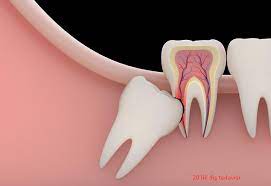
What are wisdom teeth?
Wisdom teeth are the 3rd molars that should erupt between the ages of 17-26.
When and when should wisdom teeth be extracted?
Wisdom teeth are the teeth located at the back of the mouth. Since they are in an area that is difficult to reach and see, brushing and maintenance can be more difficult than other teeth. Due to inadequate brushing, wisdom teeth can easily decay, causing pain and bad breath.
In some cases, wisdom teeth cannot erupt due to space limitations in the jaw. They can remain fully impacted (not visible in the mouth under both the gum and the jawbone) or they can remain half-embedded under the gum and become associated with the oral environment. In this case, they cause infection by causing food to get stuck and accumulate in the area where they emerge from the gum. Swelling and redness of the gum around the wisdom tooth, severe pain radiating to the neck and ear, swelling of the lymph nodes, pain during mouth opening and swallowing are called pericoronitis.
Fully impacted wisdom teeth can compress the teeth in front of them and cause crowding (curvature) in the teeth.
They can also put pressure on the neighboring tooth and cause this tooth to decay. Impacted wisdom teeth that go unnoticed for many years can cause serious problems by causing cysts that reach large sizes in the jaw.
Even if they do not cause any problems, wisdom teeth may need to be extracted for orthodontic treatment in order for other teeth to line up properly. For such reasons, wisdom teeth should be extracted with local anesthesia by numbing only the area where they are located.
Extraction of wisdom teeth should be performed by maxillofacial surgeons.
Do wisdom teeth need to be extracted?
A healthy wisdom tooth in the correct position does not need to be extracted.
Can other teeth remain impacted?
Apart from wisdom teeth, sometimes canines and premolars can also remain impacted. When it is determined that they cannot be replaced orthodontically (with braces), they should be extracted in the same way.
How should oral care and nutrition be after the operation?
Spitting, brushing, vigorous rinsing, using straws or gargling should not be done on the first day after extraction. Warm, granular and soft foods should be consumed for the first two days. Antiseptic mouthwashes recommended by the doctor should be used after each food consumption and tooth brushing. Painkillers and antibiotics, if recommended, should be used regularly. Smoking should be avoided for the first 48 hours as it will disrupt the healing process.
Is there a lot of pain after wisdom tooth extraction?
Following a quick and adequate surgery, there is not much pain and the pain can be easily controlled with mild painkillers.
Will my face swell a lot after extraction?
Edema on the cheek varies greatly depending on the condition of the tooth and from person to person. Cold tampons (ice compresses) should be applied to the cheek area for the first 24 hours to prevent swelling. Slight swelling is normal and is a stage of the healing process.
*Page content is for informational purposes only. Please consult your doctor for diagnosis and treatment.
Jaw cyst surgery
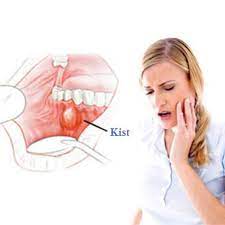
What is jaw cyst surgery?
Jaw cysts are odontogenic (tooth-derived) cysts that form anywhere in the mouth. They may cause pain or swelling and be noticed by the patient, or they may reach quite large sizes without being noticed at all. Although treatment methods vary depending on the location and size of the jaw cyst, they should be removed by oral and dental surgeons.
What kind of problems do jaw cysts cause? Can they be left unremoved?
Odontogenic cysts are usually benign slow-growing formations, but if not intervened in time, they can reach very large sizes and damage normal anatomical spaces such as sinuses, nasal cavity, nerves or show signs of malignancy (transformation into malignant tumors can be seen).
How is jaw cyst surgery? Can it be performed anesthetized?
The teeth that are found to be associated with the cyst during the examination are first treated with root canal treatment. After the gum is anesthetized with anesthetic gels in the area where the cyst is located, it is again anesthetized with digital anesthesia in a very painless way. The gum is lifted from where it is easiest to reach the cyst and the cyst is reached by removing the least amount of bone possible. It is cleaned from all its borders and closed with sutures and the remaining healthy bone is left to heal. The removed piece should be examined in the pathology laboratory.
Jaw cysts that are found to be very large should be removed under general anesthesia. During the examination, your doctor decides how the procedure will be performed.
Is the operation of jaw cysts a painful procedure?
Cyst operation is no different from procedures such as tooth extraction and implants. As with other surgical procedures, antibiotics, painkillers and antiseptic mouthwashes deemed appropriate by the dentist can be used.
*Page content is for informational purposes only. Please consult your doctor for diagnosis and treatment.
Impacted tooth
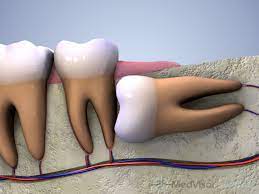
What is impacted tooth?
An impacted tooth is a tooth that has not erupted when it should have erupted and remains in the gum or bone.
Which teeth can remain impacted?
Wisdom teeth, canines and premolars can also remain impacted. If it is determined that they cannot be replaced orthodontically (with braces), they must be extracted by maxillofacial surgeons in the same way.
In which cases and when should impacted teeth be extracted?
The wisdom teeth are the last teeth in the mouth. Since they are in an area that is difficult to reach and see, brushing and maintenance can be more difficult than other teeth. Due to inadequate brushing, wisdom teeth can easily decay and cause toothache and bad breath.
In some cases, wisdom teeth cannot erupt due to space limitations in the jaws. They can remain fully impacted (not visible at all in the mouth under both the gum and the jawbone) or they can remain half-embedded under the gum and become associated with the oral environment. In this case, they cause infection by causing food to get stuck and accumulate in the area where they come out of the gum. Swelling and redness of the gums around the wisdom tooth, severe pain radiating to the neck and ear, swelling of the lymph nodes, pain during mouth opening and swallowing are called pericoronitis.
Fully impacted wisdom teeth can compress the teeth in front of them and cause crowding (curvature) in the teeth. They can also put pressure on the neighboring tooth and cause this tooth to decay. Impacted wisdom teeth that go unnoticed for many years can cause serious problems by causing cysts that reach large sizes in the jaw.
Even if they do not cause any problems, wisdom teeth may need to be extracted for orthodontic treatment in order for other teeth to line up properly. For such reasons, wisdom teeth should be extracted with local anesthesia by numbing only the area where they are located.
How should oral care and nutrition be after impacted tooth operation?
Spitting, brushing, vigorous rinsing, using straws or gargling should not be done on the first day after extraction. Warm, granular and soft foods should be consumed for the first two days. Antiseptic mouthwashes recommended by the doctor should be used after each food consumption and tooth brushing. Painkillers and antibiotics, if recommended, should be used regularly. Smoking should be avoided for the first 48 hours as it will disrupt the healing process.
Is there a lot of pain after impacted tooth extraction?
Following a quick and adequate surgery, there is not much pain and the pain is easily controlled with mild painkillers.
Will my face swell a lot after an impacted tooth operation?
Edema on the cheek varies greatly depending on the condition of the tooth and from person to person. Cold tampons (ice compresses) should be applied to the cheek area for the first 24 hours to prevent swelling. Slight swelling is normal and necessary for healing.
*Page content is for informational purposes only. Please consult your doctor for diagnosis and treatment.
What is Gingival Aesthetics? (Pink Aesthetics)
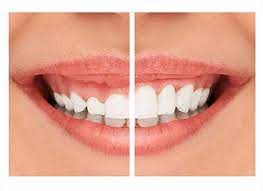
What is Gingival Aesthetics? (Pink Aesthetics)
Gingival aesthetics is a dental treatment application, also known as pink tooth aesthetics, which includes procedures in which the gums are symmetrically shaped by considering the smile line and the dimensions of the teeth on a patient basis.
What is the Gingival Aesthetics Recovery Period?
Although the pink aesthetic healing process varies from patient to patient, it is planned to be completed in 10-14 days.
What are the Dental Aesthetic Treatment Methods?
Pink aesthetics, gingivectomy (gum cutting) or gingivoplasty (gum shaping) can be performed under local anesthesia, usually with a laser, to lengthen the length of the teeth, thus reducing the gummy smile (gum visibility) or removing asymmetries by leveling the gums. If the gums are very red and swollen, they can be anesthetized with subgingival curettage applications. Smile aesthetics can be performed on any patient whose gum and tooth structure is suitable for this treatment without age limitation.
What are the Features of Gingival Aesthetics?
Teeth are leveled as they should be.
The tissues surrounding the teeth are made healthy.
Bleeding and swelling in the gums are treated.
It is aimed to prevent bad breath and wound formation.
In the long term, teeth are planned to be protected healthily in the mouth.
In Which Situations and How Is Gingival Aesthetics Performed?
Each tooth has a standard place and shape where the gum level should be. When this standard is disrupted, oral aesthetics may deteriorate. Gums that appear too much while laughing or talking (gummy smile) can affect the whole appearance badly. These problems are usually solved with lasers in a single session, without bleeding and without stitches.
What are Gum Diseases? How to Prevent?
Gum diseases are diseases that affect the tissues surrounding the tooth called periodontium. Gum disease starts in the gums first, in which case it is called gingivitis. If left untreated, it causes destruction of the bone in the mouth and is called periodontitis. While gingivitis heals in a short time with gum treatment, the tissues lost in periodontitis patients may not always be recovered. Prevention of these diseases is possible with proper and effective daily dental care and regular gum checks.
*Page content is for informational purposes only. Please consult your doctor for diagnosis and treatment.
Gum recession
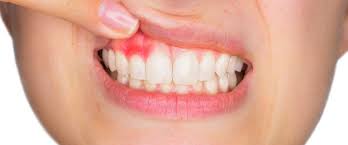
What is gum recession?
Gum recession is the recession of the gum over the tooth root, exposing the root surface.
In which age groups does gingival recession occur?
The possibility of gingival recession increases with age. Recession can also occur at a young age due to environmental and genetic factors.
What are the causes of gum recession?
Using a toothbrush with very hard bristles
Brushing the gums in the opposite direction, vigorously
Severe crowding of the teeth
Heavy calculus deposits due to lack of hygiene
Severe systematic diseases that cannot be controlled
Cigarette
Incorrectly made crowns and fillings are the main causes of gum recession.
How should I brush my teeth to avoid gum recession?
Teeth should be brushed with a medium-hard brush, without applying too much pressure with the hand and always moving from gum to tooth. Rechargeable toothbrushes with a pressure sensor are recommended by dentists.
How do gum diseases cause gum recession?
Gum diseases start in the soft tissue, and if left untreated, reach the tissues surrounding the tooth and finally the bone. As a result of bone resorption due to inflammation, gum recession occurs.
What problems does gingival recession cause?
Tooth sensitivity, bad breath due to plaque accumulation, aesthetic problems, caries and tooth loss due to difficult cleaning areas.
What are the treatment options for receding gums?
In cases of gingival recession, 3 treatment methods are applied: treating the damage to the tooth tissue, treating tooth sensitivity and surgically replacing the receding gum tissue.
How is the damage to the tooth tissue treated?
Damage to the gums is treated by filling the damaged area or completely covering the tooth. In this way, the sensitivity problem is also eliminated.
In which cases is gum surgery performed?
Gum surgery is applied in cases that have occurred in the anterior regions of our patients, especially in cases that cause aesthetic problems, in cases where gum disease has progressed and in cases where veneers on the back teeth will not be sufficient.
How is gum surgery applied?
Gum surgery is applied in two ways. In the first method called grafting, a piece taken from the patient’s palate and called a graft is applied to the area with gum recession. In the second method called sliding, if there is solid tissue next to the receding area, the tissue is closed by sliding it over the recession.
What should I pay attention to after the operation?
The most important issue to be considered after the operation is to keep that area away from mechanical trauma. You should pay attention to what you eat and avoid hard, spicy, acidic and very hot foods. Keeping the operation area clean is one of the most important factors affecting the outcome of the treatment.
Can I smoke during the treatment?
Patients should avoid smoking as much as possible before the operation and during the one-week recovery period after the operation. Since a new tissue is formed in the area, the nutrition of that tissue is very important and smoking disrupts the nutrition. Gum treatment is not suitable for patients who smoke a lot.
Are stitches applied after gum surgery, and if stitches are applied, after how many days are they removed?
Stitches are usually applied after gum operations and the stitches are removed one week after the operation.
*Page content is for informational purposes only. Please consult your doctor for diagnosis and treatment.
Bleeding Gums
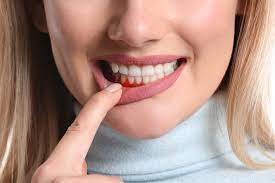
What is Gum Bleeding and Why Does It Occur?
Gingival bleeding refers to the disruption of the structure of the vessels that feed the gum tissue due to gum disease that develops with the presence of attachments such as plaque and tartar on the tooth surface and the extravasation of blood elements out of the vessel. In other words, the first sign of inflammatory gum disease is bleeding. This bleeding can be stimulated (touching, brushing, etc.) or spontaneous. In addition, too hard brushing, overflowing or incomplete fillings, caries, incompatible prostheses can cause bleeding. Pregnancy, menstruation, menopause, blood diseases, diabetes, vitamin C and K deficiencies, genetic predisposition, use of blood thinners can also give signs of bleeding gums.
How to Treat Bleeding Gums?
Bleeding gums; It is treated by diagnosing the cause of bleeding and applying appropriate treatments. In this context, scaling, subgingival curettage (deep cleaning) and plaque cleaning are performed if necessary. Patient care is very important during the healing process. For this reason, proper brushing and the use of dental floss or intermediate brushes should be included in the treatment process. If there are cavities, they should be treated, and if there are incompatible fillings or prostheses, they should be corrected or replaced. Systemic problems that may cause bleeding should be identified and the patient’s physician should be consulted.
*Page content is for informational purposes only. Always consult your doctor for diagnosis and treatment.
Frenulum (tongue, lip, cheek ligament)
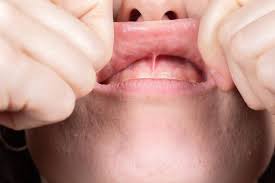
What is the frenulum (tongue, lip and cheek ligament)?
The frenulum is the soft mucous tissue between the gum tissue and the tongue, lips and cheek, which connects these tissues and limits their movement.
Where is the frenulum located in the mouth?
The frenulum is located between our upper and lower central incisors, between our cheek and back teeth and under our tongue.
How many frenulum are there in our mouth?
This varies from individual to individual. In almost every person, there is one under the tongue, but there is more than one above our upper and lower front teeth and in the back of the cheek.
In which cases do frenulum pose a risk to oral health?
Frenulum can pull the gum down and cause gum recession and gum disease, especially when they are larger and thicker than normal and when they are attached too close to the edge of the tooth. Abnormally large and thick frenulum on the tongue can cause speech problems, especially in young children.
Do frenulums cause aesthetic problems?
Yes, especially if there is an abnormally thick and large frenulum between the upper and lower middle teeth, it causes the teeth not to meet and leaves gaps called diestema between the teeth and causes aesthetic problems.
What can be done when frenulum causes functional or aesthetic problems?
When frenulums are located close to the gingival margin in a way that may cause gingival recession and gum disease, they should be removed from that area. Especially when they are located between the upper and lower incisors and cause diestema, the frenulum should be removed first and then orthodontic treatment is applied to unite the teeth.
How is the frenulum removed?
The frenulum is removed in minutes with a procedure called frenectomy.
How is the frenectomy procedure performed?
Frenectomy procedure is now mostly performed with the help of laser thanks to the developing technology, which makes the procedure both short and bleeding-free. However, in cases where the ligament is very large or deep, surgical removal and stitches are required.
Will I feel pain during the procedure?
Frenectomy is performed under local anesthesia, so there is no pain during the procedure. The postoperative period is also comfortable with regular care and medication.
How many days will the stitches stay?
Stitches are removed one week after the procedure.
Will there be a scar after a frenectomy?
There is no scar after the frenectomy procedure.
*Page content is for informational purposes only. Please consult your doctor for diagnosis and treatment.
Complete tooth prosthesis (denture)
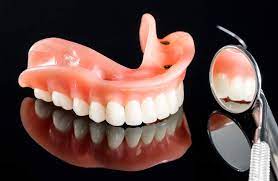
What is a complete denture (denture tooth)?
Full dentures, also known as palatal dentures, are dentures that fit on the upper and lower palates and are made when there are no teeth in the mouth.
How many days does it take and how many visits do I have to make?
Full dentures are prepared in an average of 5 sessions with impressions and various rehearsals. An average of 2 weeks is enough for 5 sessions.
Is it easy to use?
Since palatal dentures are removable dentures, they are more difficult to use than other dentures. They can be easily placed and removed from the upper and lower jaw, but the comfort and chewing efficiency of fixed dentures are not expected.
Will I get used to using these dentures?
When first worn, some areas may develop bumps and wounds, but after the bumps are removed, they become accustomed to use for a certain period of time and function as if they were the person’s own teeth.
How is it cleaned?
Full dentures are cleaned under running water with soap and a brush. Toothpaste is not used for cleaning. There are special cleaning brushes for complete dentures and they can also be cleaned with normal toothbrushes. In addition, some brands have cleaning tablets, the prosthesis can be cleaned by soaking the tablet in a glass of water.
Can I eat comfortably with full dentures?
The retention of the prostheses, which are made individually by taking impressions from the jaws, depends on the amount of bone in the upper and lower jaw. If the amount of bone is sufficient, the retention and stabilization of the prosthesis will be good and you can grind food comfortably with dentures. When full dentures are first fitted, there may be difficulty until the cheek and lip muscles get used to them, after which biting, cutting and grinding functions can be performed comfortably.
Do dentures move while eating?
If the amount of bone in the upper and lower jaw is insufficient, the retention and stabilization of the dentures will decrease and the dentures may move while eating. In this case, special adhesives can be used or it may be necessary to get support from implants placed in the jawbone so that the dentures do not move.
Will I be satisfied with the appearance of full dentures?
Full dentures inflate the cheek and lip depressions by filling them. The teeth used in dentures can also be designed as porcelain in the front group.
What should I pay attention to when using it?
Care should be taken to clean complete dentures and cleaning should never be done with boiling water. When going to bed at night, the denture should be removed from the mouth and kept in a special container. In addition, it should be kept in mind that dentures are fragile and care should be taken if they are dropped while wearing or cleaning them.
Is it possible to repair dentures when they break or fall out?
Depending on the shape and size of the fracture, it can usually be easily repaired, although it may be necessary to take impressions from the jaws for repair. Teeth that fall out of the prosthesis are also easily repaired.
How long does it take to repair dentures?
Depending on the shape and size of the fracture, it is usually possible to repair it in 1 or 2 days.
Is it possible to use dentures in diabetics?
Full dentures can be applied to almost every patient in case of complete edentulism and can be easily applied to diabetics. It may take a long time to heal the bumps and wounds that may occur in the mouth after the application, and the use of special gels and artificial saliva may be necessary as there may also be dry mouth problems.
Is it possible to use dentures in patients with osteoporosis?
Osteoporosis in the body and osteoporosis in the mouth are usually not related. Bone thickness and height are checked by intraoral examination and X-rays to determine suitability for dentures. In case of excessive resorption (bone resorption), bone volume can be gained by surgically removing bone from different areas.
Is it possible to use dentures in allergic patients?
First of all, an allergy test should be performed to determine what the patient is allergic to. Since complete dentures do not contain metal, they can be easily applied to patients with metal allergies. However, it is not possible to use complete dentures in the presence of allergy to acrylic, which is the material of complete dentures, in this case implant-supported dentures can be used.
What is the lifespan of complete dentures?
Complete dentures can last for many years with good care and hygiene. In cases of weakening or bone resorption, the prosthesis may become loose and play over the years.
The complete denture I have been using for years has started to loosen and move, what can be done?
For loosening and wiggling due to weakening and bone resorption, the existing denture can be re-fitted by feeding, and if there are too many changes in the upper and lower jaws, it may be necessary to redo the denture.
I am very satisfied with the denture I had made years ago, there is only discoloration and darkening, can I have the same denture?
If the discoloration and darkening on the complete denture does not come out during professional cleaning, a duplicate of the existing denture can be made.
I am satisfied with the retention of my denture that I have been using for years, but it does not cut the teeth, can the teeth be sharpened?
Only the teeth can be replaced without changing the base of the existing denture, the new teeth will be sharper and less worn.
My complete denture on the upper jaw holds very well but my complete denture on the lower jaw holds much less, why?
A complete denture in the upper jaw takes up much more space than a complete denture in the lower jaw, and the presence of the tongue in the lower jaw causes the denture to move more, as well as the available bone volume, which also affects retention. Since tooth loss in the lower jaw usually occurs earlier, the bone resorbs more and the retention of the prosthesis is less.
Do I have to have a complete denture when I lose all my teeth?
It is very difficult for patients who have lost all their teeth and have never used full dentures before to get used to full dentures. If there is sufficient bone volume in the upper and lower jaw, prostheses made on implants placed in the bone are much more comfortable and easy to use than full dentures. In case of complete edentulism, we primarily recommend implant-supported dentures.
*Page content is for informational purposes only. Please consult your doctor for diagnosis and treatment.
Precision attachment dentures (snap dentures)

What are precision attachment dentures (snap dentures)?
It is a type of dental prosthesis applied in cases where there are many missing teeth and treatment with fixed prostheses cannot be performed. They are also popularly known as ‘snap-on dentures’ because of their hidden retainers that fit into the slots prepared in the teeth.
How many days does it take and how many visits do I have to make?
Precision-connected dentures are also prepared in an average of 5 sessions with impressions and various rehearsals. An average of 2 weeks is enough for 5 sessions.
Are snap-on dentures easy to use?
Snap-on dentures have sensitive parts that fit into the slots prepared in the teeth. While they are very tight when first inserted and removed, they can be inserted and removed more easily over time.
Will I get used to using snap-on dentures?
These types of dentures have metal parts that pass under the tongue in the lower jaw and through the palate in the upper jaw, just like partial dentures. Having these parts in the prosthesis helps to get used to it over time.
How to clean a precision attachment?
The cleaning of precision attachment dentures is the same as for full dentures.
Can I eat comfortably with snap-on dentures?
Precision attachment dentures are suitable for use because they are made with support from both soft tissue and existing teeth. Cutting, biting and grinding functions can be performed.
Does it move while eating with snap-on dentures?
The parts of the precision-fitted dentures that fit into the slots prevent the denture from being dislodged, so they do not move while eating. Over time, the precision fittings may loosen, in which case the elastics can be easily replaced.
Am I aesthetically satisfied with snap-on dentures?
Since the parts of the dentures that receive support from the teeth are inside the denture, they are much more aesthetically pleasing than dentures with hooks.
What should I pay attention to when using snap-on dentures?
In addition to the things to be considered when using full dentures, it is important not to damage the delicate fittings when inserting and removing them. The insertion and removal should be done slowly and carefully. After making sure that the prosthesis is fully seated, the jaw should be closed and the prosthesis should not be placed by closing the jaw, otherwise damage to the sensitive connection parts may occur.
Is it possible to repair snap-on dentures when they break or when teeth fall out?
As with partial dentures, the base and teeth can be easily repaired. If the elastics inside the precision attachments become loose, they can be replaced, but if the precision attachment parts break, it is difficult to repair.
How long does it take to repair dentures with snap fasteners?
As with partial dentures, it is usually possible to repair the fracture in 1 or 2 days, depending on the shape and size of the fracture.
Is it possible to use snap-fit dentures in diabetics?
As with partial dentures, precision-linked dentures can be applied to almost all patients and can be easily applied to diabetics. It may take a long time to heal the bumps and wounds that may occur in the mouth after the application, and the use of special gels and artificial saliva may be necessary as there may also be dry mouth problems.
Is it possible to use snap-on dentures in patients with osteoporosis?
The volume of bone tissue is not very important in a precision-connected denture. Since it is a prosthesis made with the support of existing teeth, the number, strength and size of the existing teeth are important.
Is it possible to use snap-fit dentures in allergic patients?
First of all, an allergy test is performed to determine what the patient is allergic to. Metal and acrylic materials are used in precision-connected dentures. If there is a metal allergy, it can be determined which metal it is against and the prosthesis can be applied using another metal. However, if there is an allergy to acrylic, it is not possible to use precision-connected dentures, in which case implant-supported dentures can be used.
What is the lifespan of snap-on dentures?
Dentures with precision attachments can last for many years with good care and hygiene. Depending on use, the elastics and other parts of the precision attachments may become loose or break. If the supported teeth are lost, the prosthesis must be replaced.
Are existing teeth treated when making a precision attachment prosthesis?
Since precision-linked dentures have to fit into the slots prepared in the teeth, the existing teeth have to be covered.
What are the differences between partial dentures and precision-linked dentures?
Partial dentures have unaesthetic hooks, precision-linked dentures do not. Partial dentures may not require any work to be done on existing teeth, whereas precision-linked dentures require work to be done on existing teeth. The jaw must have at least 4-6 teeth for a precision-linked denture, there is no restriction for a partial denture. The cost of a precision-linked denture is slightly higher than a partial denture.
Is a precision-linked denture or a partial denture healthier?
In the case of multiple missing teeth, if a fixed prosthesis cannot be made using the existing teeth, either a removable prosthesis (partial denture and precision-linked prosthesis) can be made or a dental implant can be placed in the jawbone for a fixed denture. Removable dentures traumatize the teeth during insertion and removal and can cause erosion of the jawbone. For this reason, fixed prosthesis by placing dental implants into the jawbone is the healthiest treatment option for multiple missing teeth.
*Page content is for informational purposes only. Please consult your doctor for diagnosis and treatment.
Partial dentures (hook dentures)

What are partial dentures (hook dentures)?
Partial dentures are prostheses made in cases where fixed dentures cannot be applied. Since the prosthesis is attached to the tooth in front of the edentulous area with a hook, it is also called a hooked prosthesis.
How many days does it take to make hooked dentures and how many visits do I have to make?
Partial dentures are prepared in an average of 5 sessions with impressions and various rehearsals. An average of 2 weeks is enough for 5 sessions.
Are partial dentures easy to use?
Partial dentures are supported by the teeth with the help of hooks. While they are very tight when first made, they are more comfortable to wear and remove over time. The comfort and chewing efficiency of fixed dentures cannot be expected in partial dentures.
Will I get used to wearing partial dentures?
This type of denture has metal parts that pass under the tongue in the lower jaw and through the palate in the upper jaw. Having these parts in the prosthesis makes it difficult to get used to at first. However, after a certain period of time, most patients use these prostheses comfortably as if they were their own teeth.
How do I clean my partial denture?
Partial dentures are cleaned under running water with soap and a brush. Toothpaste is not used for cleaning. There are special brushes for cleaning dentures, as well as normal toothbrushes. In addition, some brands have cleaning tablets, the prosthesis can be cleaned by keeping the prosthesis in the tablets thrown into a glass of water.
Can I eat comfortably with this type of denture?
Since partial dentures are made with support from both soft tissue and existing teeth, there is no problem in retention. Cutting, biting and grinding functions are performed comfortably.
Will my denture move while eating?
The hooks of partial dentures prevent the denture from dislodging, so they do not move while eating. Over time, the hooks may loosen, in which case they can be easily tightened to prevent the denture from moving.
Will I be aesthetically satisfied?
There are hooks on the parts of the partial denture that receive support from the teeth. Since the hooks are metal-colored, it may be difficult to maintain aesthetics when there are hooks on the teeth seen in the front area.
What should I pay attention to when using it?
In addition to the things to be considered when using full dentures, it is necessary not to damage the hooks when putting them on and taking them off. The insertion and removal should be done slowly and carefully. After making sure that the denture is fully seated, the jaw should be closed and the denture should not be placed by closing the jaw, otherwise the hooks may bend and break.
Is it possible to repair a denture if it breaks or the teeth fall out?
As with full dentures, the base and teeth can be easily repaired in partial dentures. If the hooks break, they can be repaired by taking impressions from the mouth.
How long does the repair process take?
As with full dentures, partial dentures can be repaired in 1-2 days, depending on the shape and size of the fracture.
Is it possible to use these dentures in diabetics?
As with full dentures, partial dentures can be applied to almost every patient and can be easily applied to diabetics. It may take a long time to heal the bumps and wounds that may occur in the mouth after the application, and the use of special gels and artificial saliva may be necessary as there may also be dry mouth problems.
Is it possible to use in patients with osteoporosis?
The volume of bone tissue is not very important in partial dentures. Since it is a prosthesis made with the support of existing teeth, the strength and size of the teeth are important.
Is it possible to use in allergic patients?
First of all, an allergy test should be performed to determine what allergies are present. Metal and acrylic materials are used in partial dentures. If there is a metal allergy, it can be determined which metal it is against and the prosthesis can be applied using another metal. However, it is not possible to use partial dentures in the presence of allergy to acrylic, in which case implant-supported dentures can be used.
What is the lifespan of hooked dentures?
Partial dentures can last for many years with good care and hygiene. In cases of weakening or bone resorption, the prosthesis may become loose and play over the years. In addition, stretching and breakage of the hooks may be encountered depending on use. It may also be possible to lose the supported teeth. In this case, the lost tooth can be added to the existing prosthesis.
The partial denture that I have been using for years has started to loosen and move, what can be done?
For loosening and wiggling due to weakening and bone resorption, the existing prosthesis can be re-fitted by feeding, and if there are too many changes in the upper and lower jaws, it may be necessary to redo the prosthesis. In addition, if the hooks are stretched or broken, they can be tightened or repaired.
Is it possible to make the hooks of the partial denture more aesthetically tooth or gum colored?
Yes, it is possible. Partial denture hooks can be made white like teeth or pink like gums, but this is not possible in all cases due to the high risk of breakage and requires careful handling.
Is there an alternative to partial dentures without hooks?
A hookless alternative to a partial denture is a precision attachment denture (snap dentures). The part of the denture that is supported by the teeth is inside the denture and is not visible.
Are existing teeth treated during partial dentures?
Partial dentures can be applied directly by taking impressions from the jaw without any treatment to the existing teeth.
*Page content is for informational purposes only. Please consult your doctor for diagnosis and treatment.
Root Canal Treatment
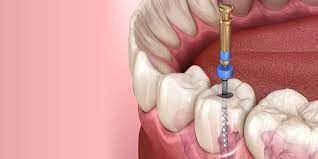
What is Root Canal Treatment?
Root canal treatment is the cleaning, disinfection and filling of the infected nerves in the canals of the tooth with canal filling materials as a result of the loss of vitality of the nerves and vessels in the tooth as a result of cracks and fractures in the teeth, tooth decay, incorrect treatment processes, incorrect restorations.
When is root canal treatment necessary?
In caries that has progressed to the nerve of the tooth,
In cases where fractures involving the nerve of the tooth occur as a result of trauma,
In cases where the tooth loses its vitality as a result of excessive force on the tooth as a result of orthodontic treatment,
In advanced gum diseases,
In the elimination of sensitivity caused by severe abrasion of the teeth,
Highly made fillings or dentures are also required.
How do you know if a tooth needs a root canal?
Very severe hot and cold sensitivity in your tooth,
Pain without any stimulus, especially at night,
Toothache during eating
Discoloration of your teeth due to the death of nerves,
Swelling on your face as a result of abscess formation,
In some cases, dental and radiological examinations without any symptoms reveal the need for treatment.
What are the stages of root canal treatment?
Anesthesia ensures that you do not feel any pain.
The decay is removed or the broken piece is removed and the nerves of the tooth are accessed.
The nerves and tissues at the root of the tooth are cleaned.
The root canal is shaped up to the root tip.
Depending on the condition of the tooth, a single session of treatment can be performed or several sessions of treatment can be performed.
In between sessions, dressing is done with medicines that will heal the root and the root tip.
At the end of the root canal treatment, the canal is filled with special filling materials up to the root tip.
Pain After Root Canal Treatment
After root canal treatment, there may be a slight pain and sensitivity in the tooth, especially during chewing. It is okay to use a mild anti-inflammatory medication for a few days after treatment.
What should be considered during root canal treatment?
Do not eat or drink anything until the anesthesia wears off.
During the treatment, nuts and similar hard foods and sticky foods such as chewing gum should be avoided in the area of the treated tooth. Most tooth fractures occur between sessions.
Care should be taken to prevent the temporary filling from falling out between treatment sessions.
Is root canal treatment a painful procedure?
Since anesthesia is applied during root canal treatment, the patient does not feel any pain.
Does the tooth need to be extracted as a result of inflammation?
Today, thanks to the substances and techniques used in root canal treatment, the vast majority of abscesses at the root end can be treated and thus the tooth does not need to be extracted.
Is it necessary to use antibiotics for tooth infections?
Under normal circumstances, antibiotics are not required during root canal treatment. However, antibiotics may be given in the presence of advanced infection or in case of extreme sensitivity in the tooth.
Are root canal filling and filling separate procedures?
Root canal filling is the process of cleaning and filling the root canal. The filling process is the restoration of the crown part of the tooth visible in the mouth with composite filling, inlay, onlay or crown depending on the amount of damage.
What is a repeat root canal treatment?
The success rate of root canal treatments performed correctly under sterile conditions is between 90 – 95%. Failure of root canal treatment is mentioned if there is any remaining nerve tissue that is not cleaned during the treatment, if the root canal filling and top filling are not done adequately, if microorganisms leak into the canal, if perforations or fractures occur during the treatment. We can recognize a failed root canal treatment by the symptoms of pain in the teeth during meals, spontaneous pain, swelling and redness at the root tip. Failed root canal treatment is renewed and the treatment is repeated. If this procedure is insufficient, apical resection is performed, the root tip is surgically accessed, the infection is cleaned and closed. If repeated root canal treatment and surgical intervention are insufficient, tooth extraction should be considered.
When are fiber applications performed?
If there is not much material loss on the tooth after root canal treatment, it is necessary to make normal filling, and if there is too much material loss, inlay and onlay treatments that will prevent the tooth from breaking are necessary. If you have no tooth wall left but the roots are intact, a ‘post’ supported by the root canal should be made and a crown should be placed on it.
What are the types of fiber application?
Cast post
Screw post
Fiber hides are the types of hides used.
Why fiber post is preferred?
Less risk of breakage.
It adheres to the tooth both mechanically and chemically.
Since there is no metal reflection under full ceramic restorations, an aesthetic appearance is obtained.
How is fiber post applied?
It is applied with special space opening drills and adhesives.
*Page content is for informational purposes only. Please consult your doctor for diagnosis and treatment.

